Great Minds Come Together at the 2023 Wharton Neuroscience Summit
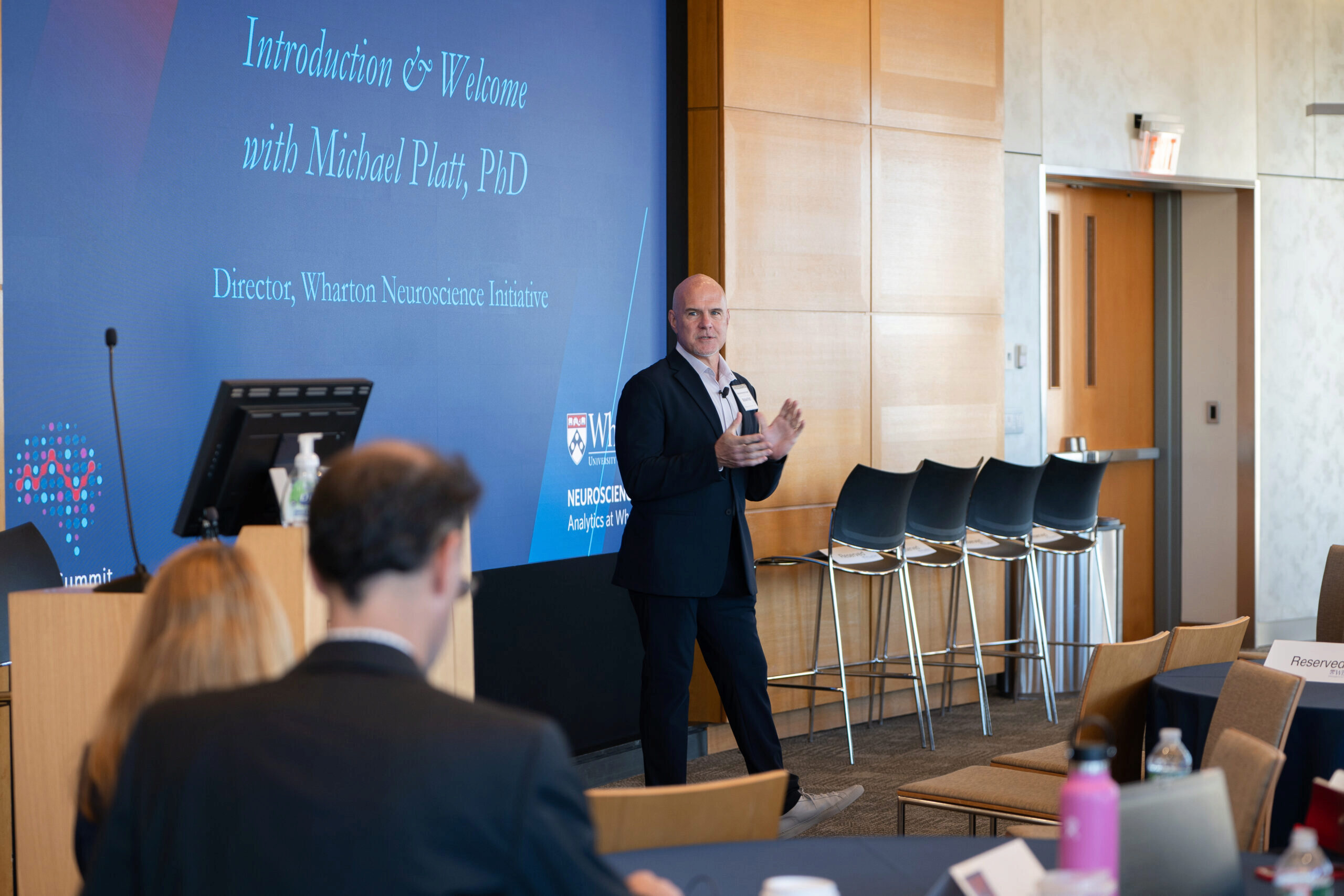
On Friday, November 3, more than 100 attendees from industry and academia gathered on the eighth floor of Huntsman Hall at the Wharton School for the 2023 Wharton Neuroscience Summit, the first since 2019. The day-long event, titled “Brain Capital: The Future of Human Creativity, Well-Being, and Performance,” focused on our population’s collective resource of cognitive, emotional, and social skills, which will be the indispensable driver of the modern knowledge economy.
The Summit featured an impressive array of speakers and panelists that included, among others, Pennsylvania State Representative Aaron Kaufer, Jayme Banks, Deputy Chief of Prevention & Trauma with The School District of Philadelphia, and Missy Cummings, Director of George Mason University’s Mason Autonomy and Robotics Center (MARC).
During opening remarks, Michael Platt, the James S. Riepe University Professor and Director of the Wharton Neuroscience Initiative (WiN), remarked that “our brains are our best asset. Today, we’re going to make the case for investing in that asset – from infancy to an older age.”
“That’s going to involve governments, NGOs, and the private sector, in particular,” Platt continued, before remarking on the recent and significant advancements in fields like Artificial Intelligence (AI). “We have to determine how we as human beings will live and interact in this environment and do so in a way that not only preserves our DNA, but also, hopefully, takes us to a new level.”
“We need a new economic asset called brain capital, that we value in the United States as important as GDP, and as important as road infrastructure.”
Harris Eyre, Lead, Brain Capital Alliance
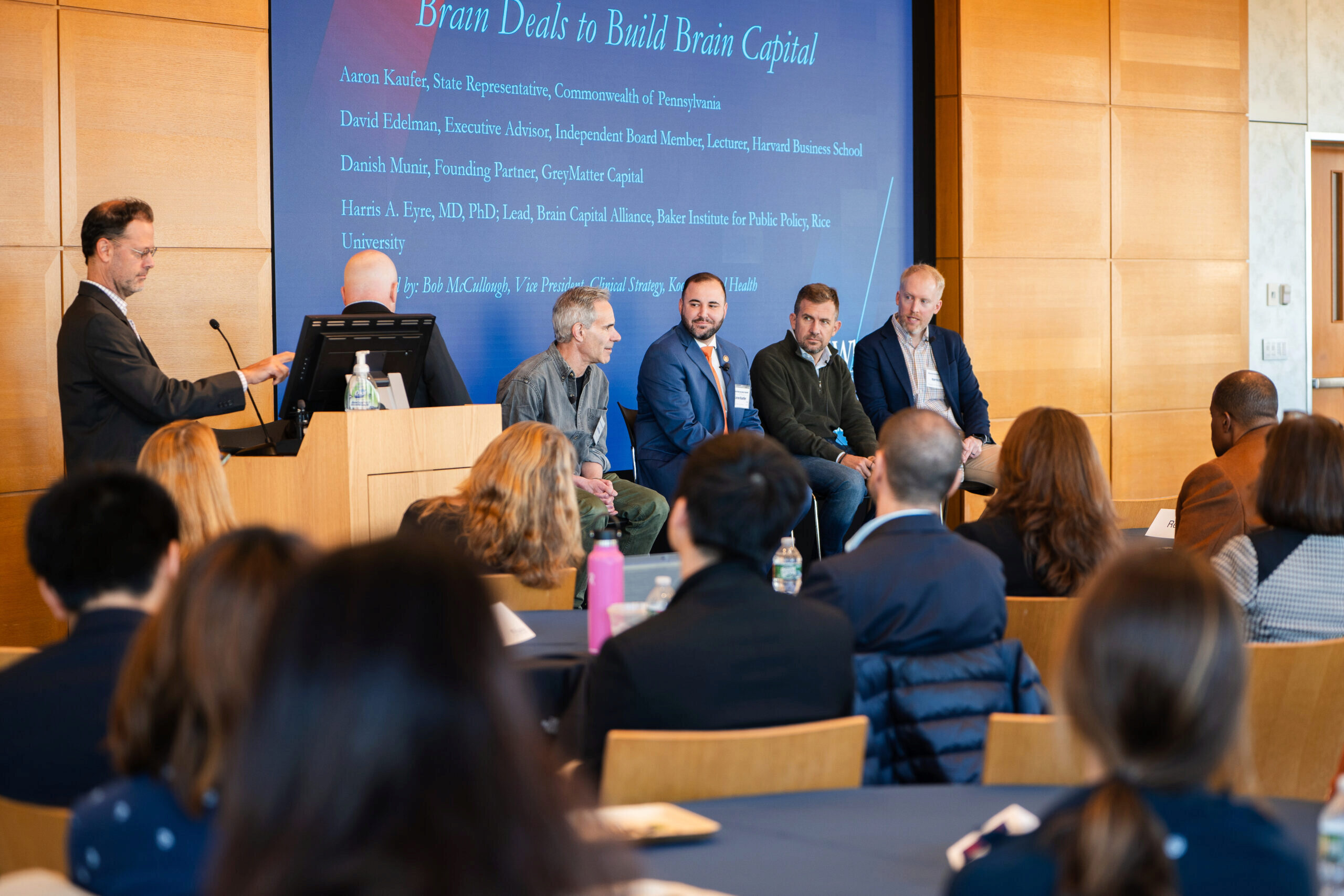
The Summit kicked off with a presentation from Harris Eyre, Lead of the Brain Capital Alliance and a fellow in brain health at the Baker Institute for Public Policy at Rice University. “We need a new economic asset called brain capital, that we value in the United States as important as GDP, and as important as road infrastructure.”
“Brain capital is under siege,” Eyre implored, citing chronic stress, COVID-19, social isolation, disinformation, climate change, and even ultra-processed foods, which have been observed to be toxic to our brains. Eyre continued to connect these factors to the economic impact in which oppressed brain capital can result. Low labor productivity, suboptimal workforce skills, cyber-vulnerability, susceptibility to misinformation, and more are associated with poor brain capital.
To address these issues, Eyre proposes a fast-paced, industrial innovation policy similar to Operation Warp Speed, which helped us to develop safe and effective COVID-19 vaccines in a relatively short amount of time. He proposed a seven-part plan: define brain capital, link this to critical built infrastructure, articulate financial incentives and innovations, prepare the workforce, define bespoke “missions” to accomplish, coordinate within government, and align other supportive policy approaches.
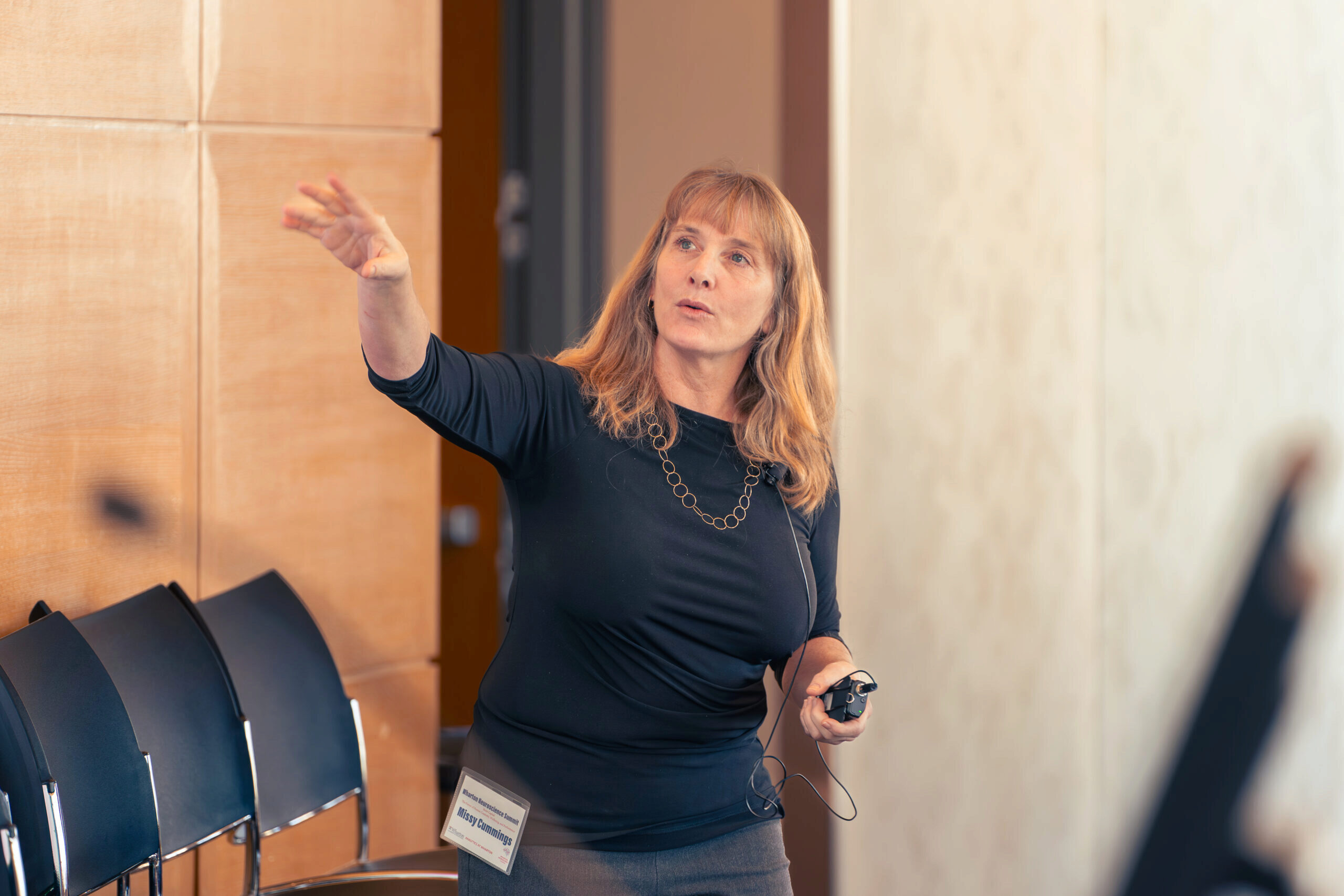
Later, Missy Cummings, who participated on a panel discussion with Stefano Puntoni, Sebastian S. Kresge Professor of Marketing at Wharton and Faculty Co-Director of AI at Wharton, among others, offered a measured, cautionary assessment of AI and its collaboration with our own organic intelligence.
“AI is getting wildly popular. It’s also getting wildly out of control, in both good and bad ways. We’ve never needed human brains more than we need them right now, because people are ascribing capabilities to AI that just simply are not true.” Cummings, who previously consulted with the Biden administration on self-driving cars, relayed a number of common points of failure with computer-vision and autonomous vehicles, such as failures resulting from occluded or partially visible stop signs, and advertisements featuring humans on the side of tractor trailers.
“I’m not saying you shouldn’t use [AI], but you need to be extremely careful how you use it. You also need to develop AI maintenance divisions and quality assurance divisions…humans are lifeguards around the AI pool,” she said.
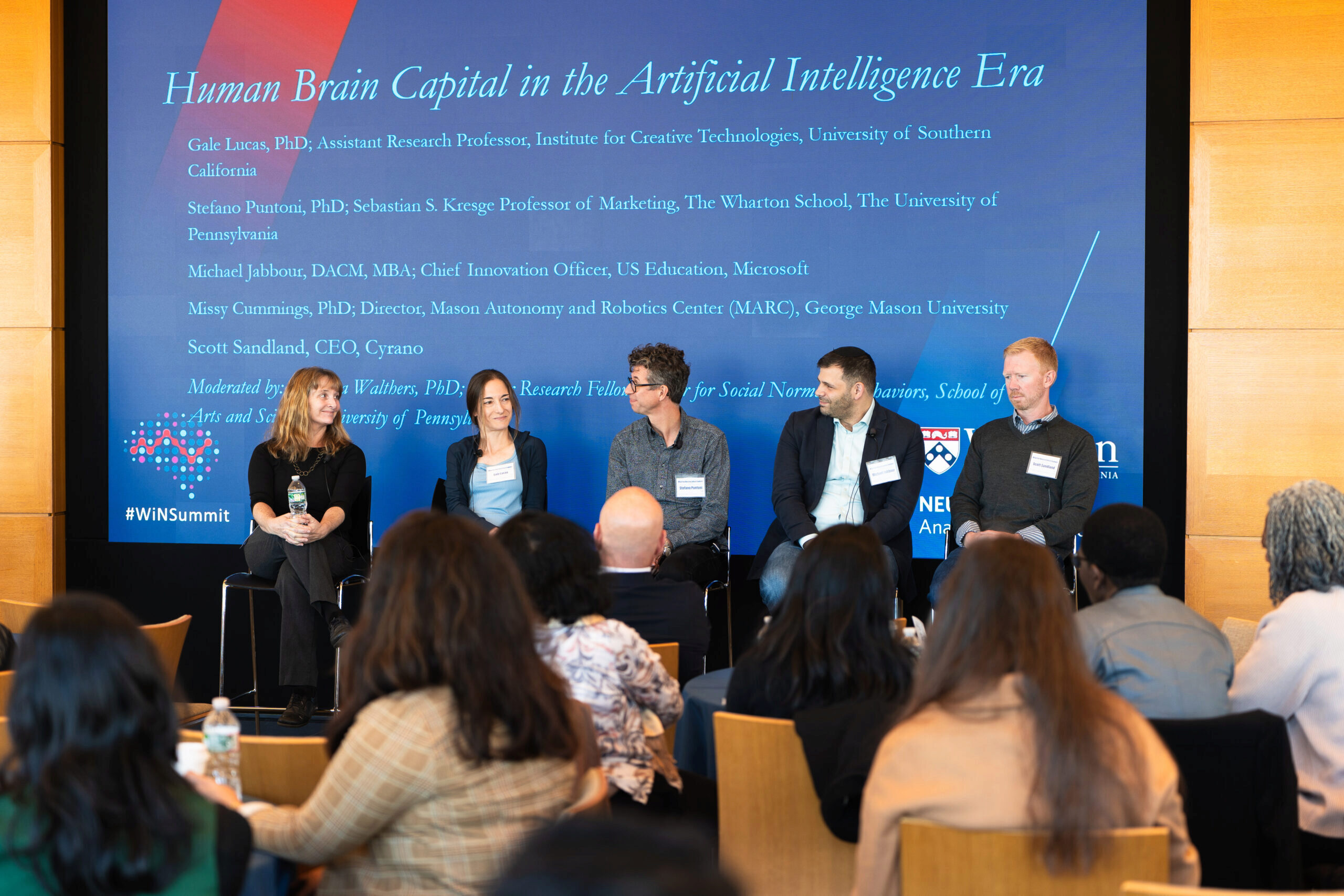
“You need to develop AI maintenance divisions and quality assurance divisions…humans are lifeguards around the AI pool.”
Missy Cummings, Director, Mason Autonomy and Robotics Center (MARC), George Mason University
Attendees then heard from Kimberly Noble, Professor of Neuroscience & Education at Columbia University, who earned her undergraduate degree (’98), PhD (’05), and MD (’07) from the University of Pennsylvania. She offered a fascinating look at how, in some cases, family income can have a direct impact on the neurological function of children.
Her study provided mothers in two separate groups with non-conditional cash gifts that they could spend as they saw fit. One group of mothers received more than the other group. After one year of these gifts, according to Noble, the children of mothers who received the larger amount of money were observed to have more fast-paced brain activity than the children of the mothers who received the lesser amount.
“Fast-paced brain activity is associated with neural maturation, as it increases as children get older,” said Noble. “In many cases, children who are at risk of attention or learning problems tend to demonstrate less fast-paced brain activity.”
This observed difference in brain activity is assumed to be largely attributed to these cash gifts affording the mothers more time to spend with their children and share in developmentally rich activities with them, such as reading. The study, which is still ongoing, reveals just how many external factors in early childhood have a direct and significant impact on our brain development.
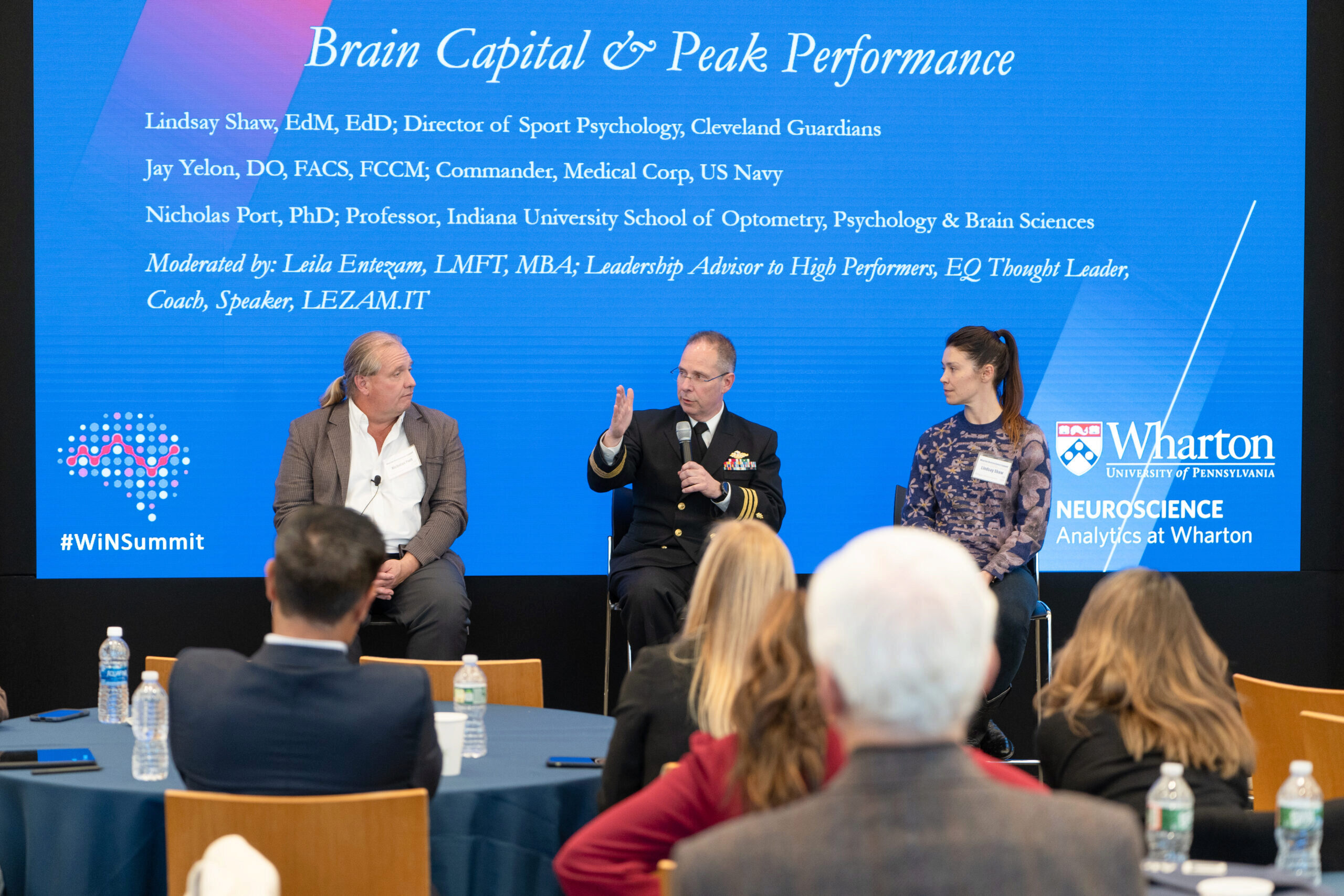
To finish off the Summit, attendees heard from Lindsay Shaw, Director of Sport Psychology with the Cleveland Guardians and a 2005 graduate of the University of Pennsylvania, Jay Yelon, Commander, Medical Corps, and Trauma Surgeon with the U.S. Navy, and Nicholas Port, Professor at Indiana University’s School of Optometry, Psychology and Brain Sciences.
The panel discussed the many ways in which mental health has a striking impact on our ability to achieve peak performance in our jobs and hobbies. Particularly, the concept of “silent suffering” is on the minds of practitioners looking to fully optimize their teams.
“When you’re not ready to talk about what’s going on, it’s really hard to provide a talk-based therapeutic intervention,” said Shaw, citing her experience with a player on the Guardians who wasn’t ready to talk about their struggles – which had long been suspected by the team – until the end of the season. “All we can do is have this consistent messaging that resources are available within the club, resources are available with our external [offerings].”
Port says his colleagues try to get in front of unspoken issues at Indiana University by being proactive with their injured athletes. “Because concussions can regularly result in mental health crises,” he says, “every athlete who is diagnosed with a concussion or suspected of having a concussion has to meet with a psychologist at least once.” In addition to studying concussions, Port has sustained a fair few himself. He is an active trapeze catcher, having formerly held that role for the Russian Circus and Cirque de Soleil. During the Summit, he shared footage from two of the several concussions he’s suffered in the air.
Although many industries share the more modern and open approach to mental health observed in the sports world, Yelon sees plenty of room for improvement in surgery.
“The concept of silent suffering is something that’s just being talked about in the surgeon world,” he says. “And mental health issues have not really been talked about in our profession. We talk about wellness, we talk about burnout…but I think that silent suffering and true mental health is an issue in the surgeon population.”
All told, the 2023 Wharton Neuroscience Summit marked a seamless return to the event’s full-bodied form last seen in 2019. According to Zab Johnson, Executive Director and Senior Fellow of the Wharton Neuroscience Initiative, these gatherings are vital for exposing practitioners and researchers to new or otherwise unconsidered applications of neuroscience across industry.
“I’m consistently impressed with the breadth of neuroscience applications on display at our Neuroscience Summits,” said Johnson. “To see so many brilliant minds pulling their resources to pursue a future where brain capital is not only an interest, but a priority, gives me hope and comfort in times that can feel overwhelmingly uncertain. I’m grateful for each presenter and attendee for investing in this journey with us.”
To watch sessions from the Summit in full, click here.


